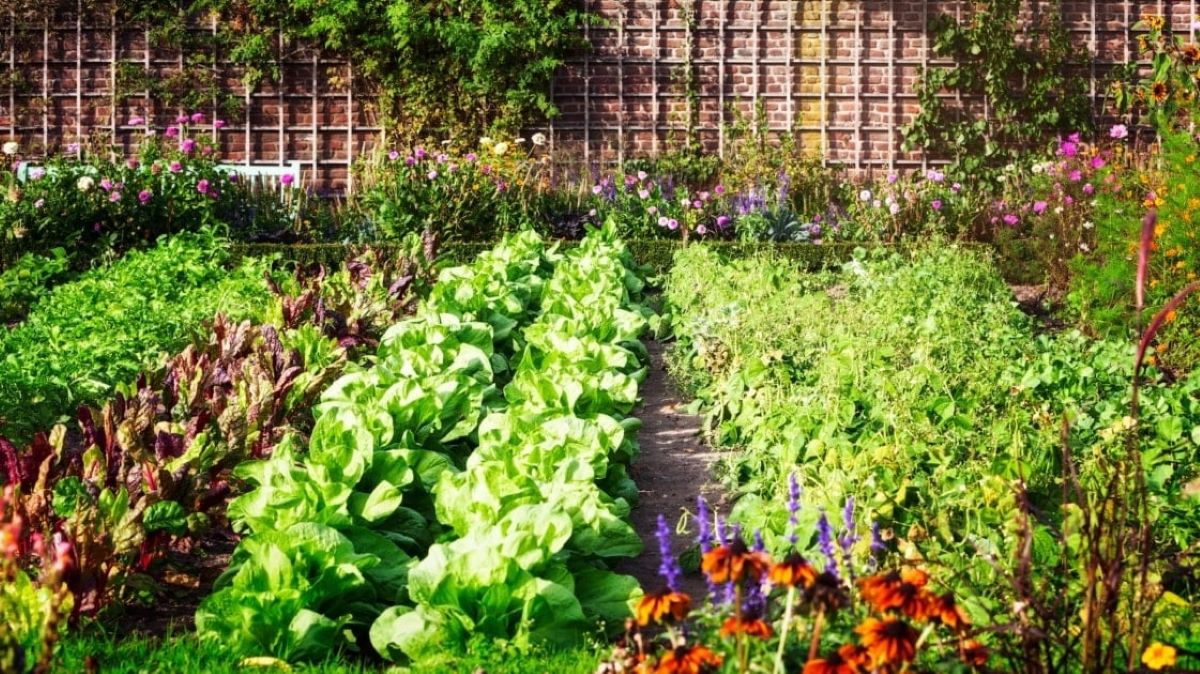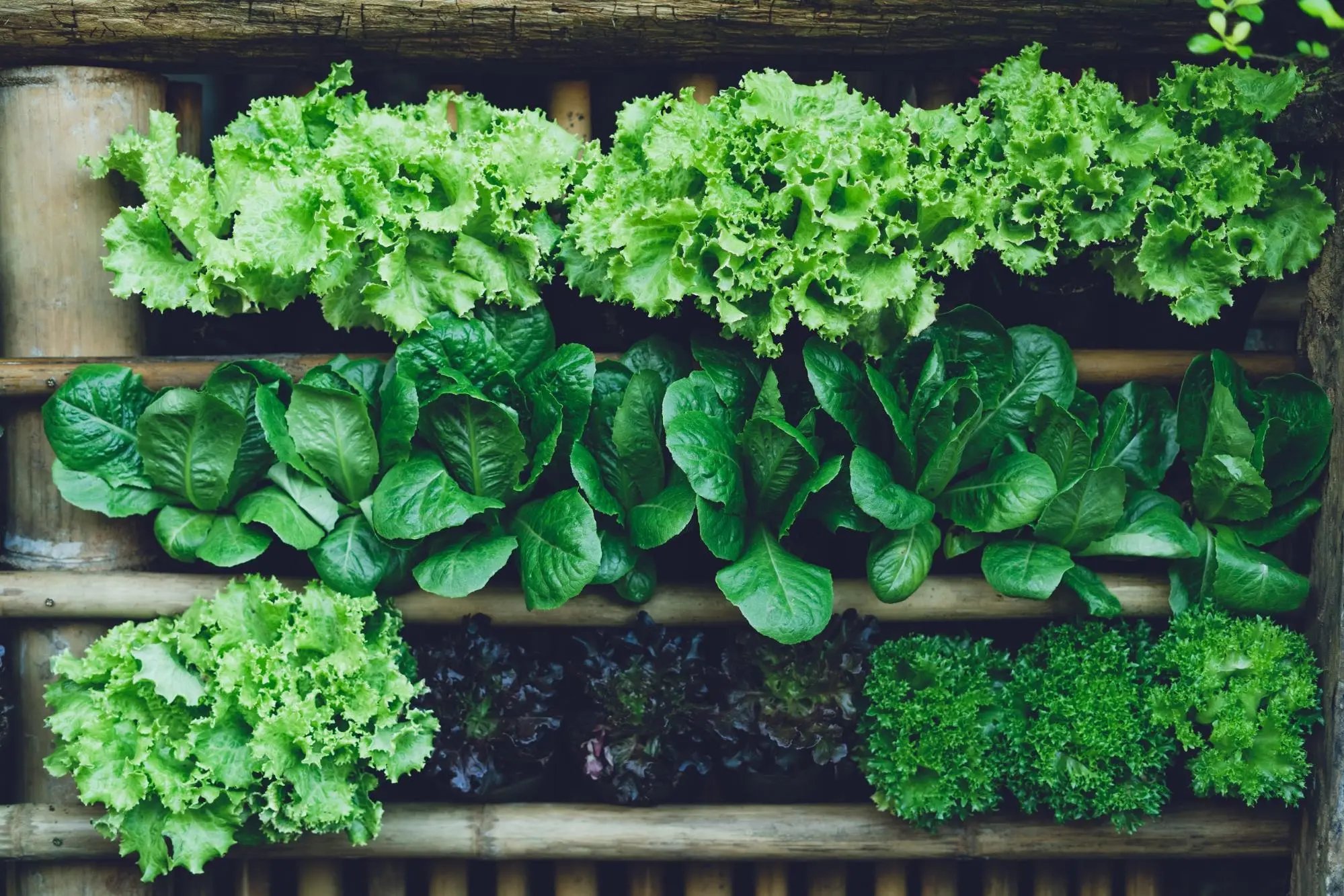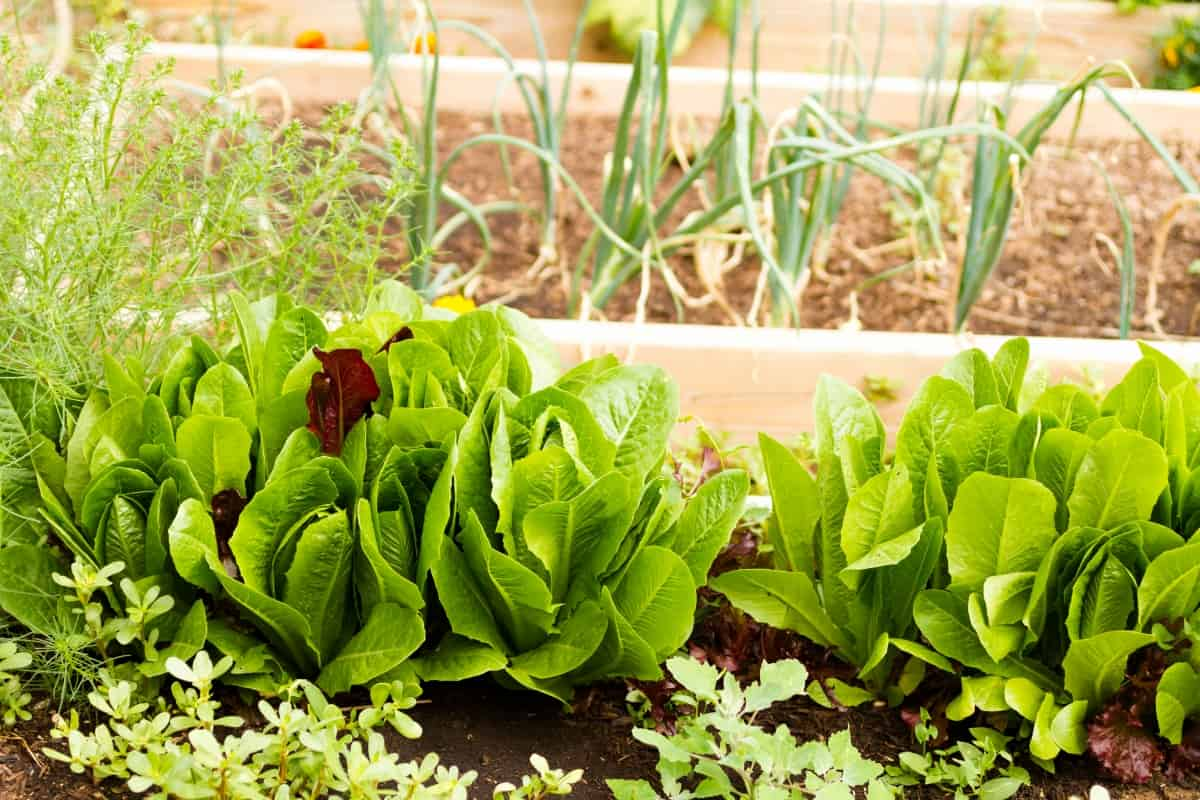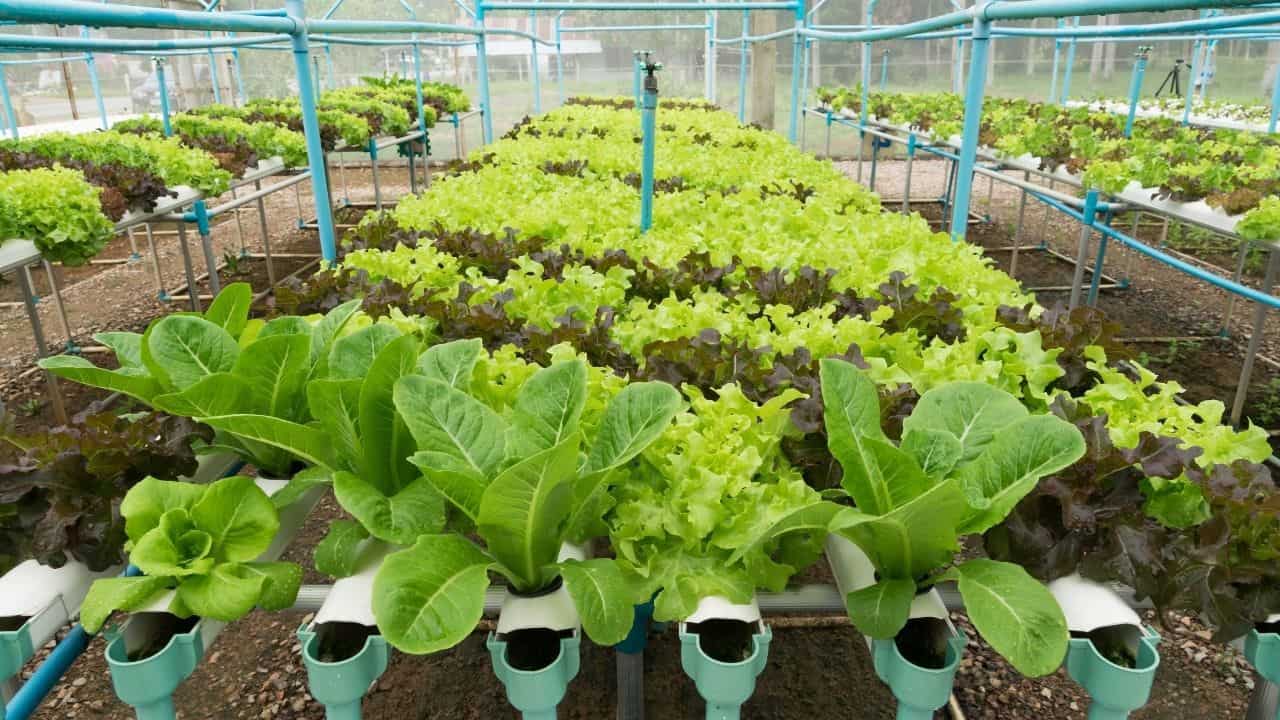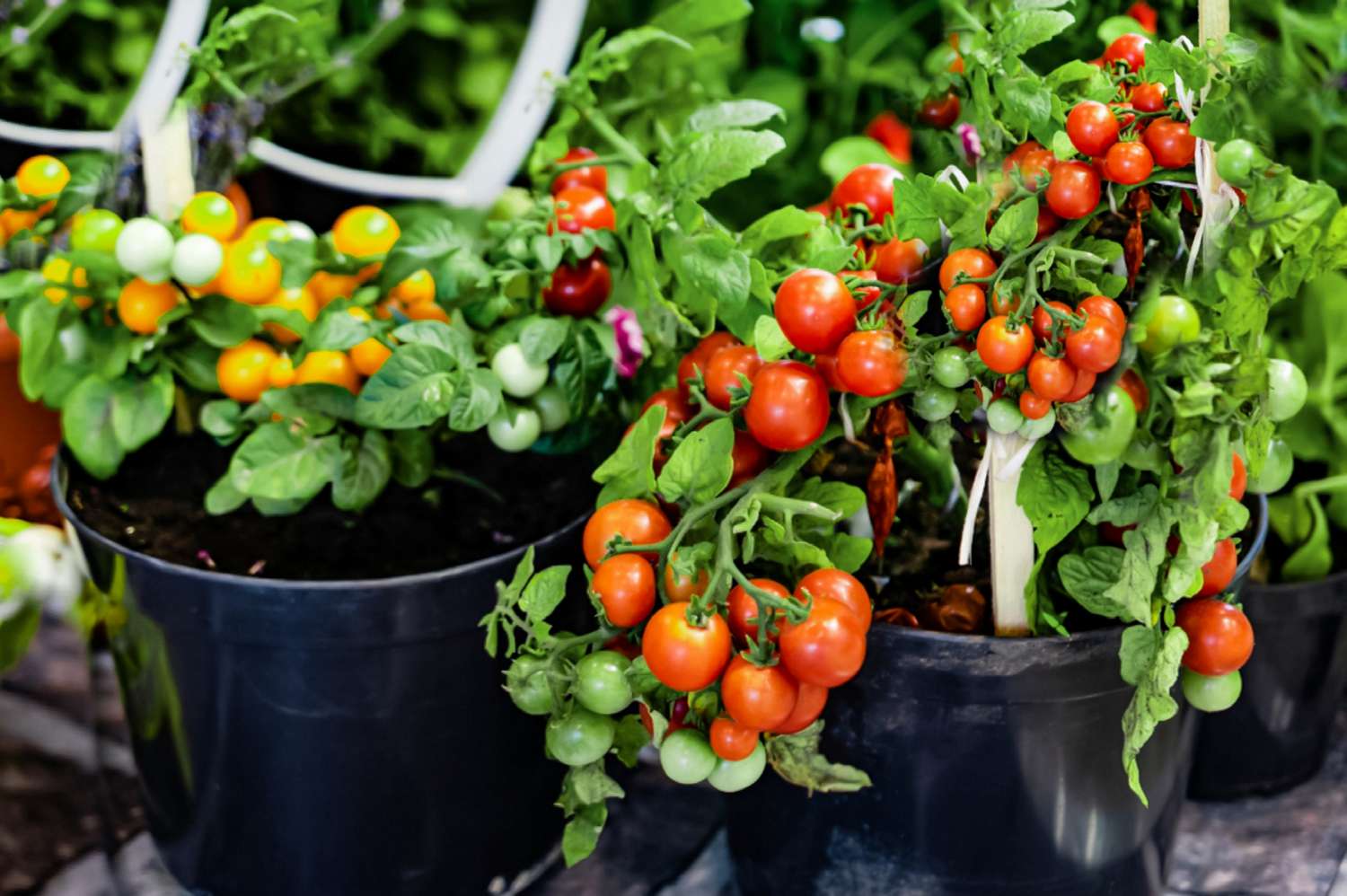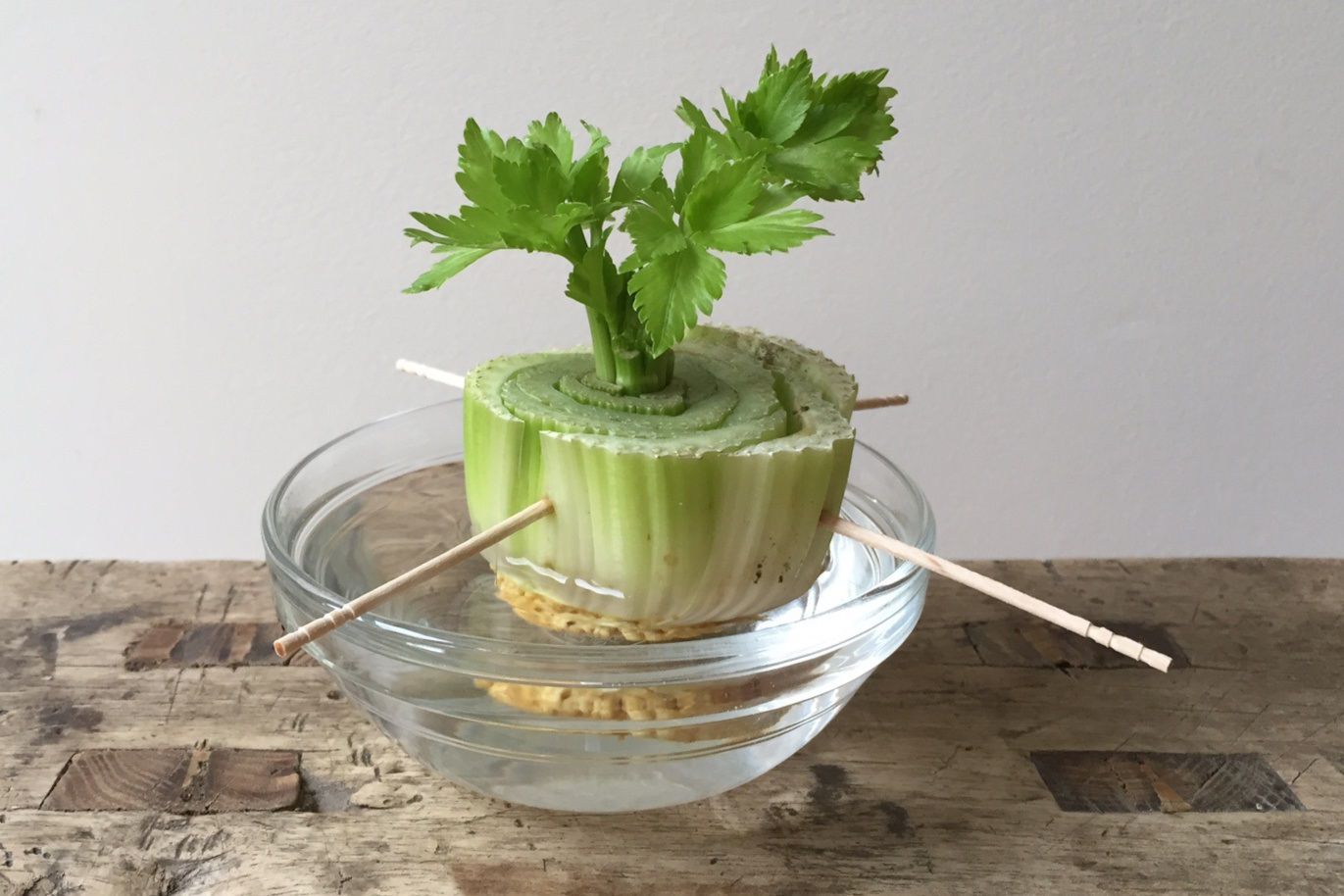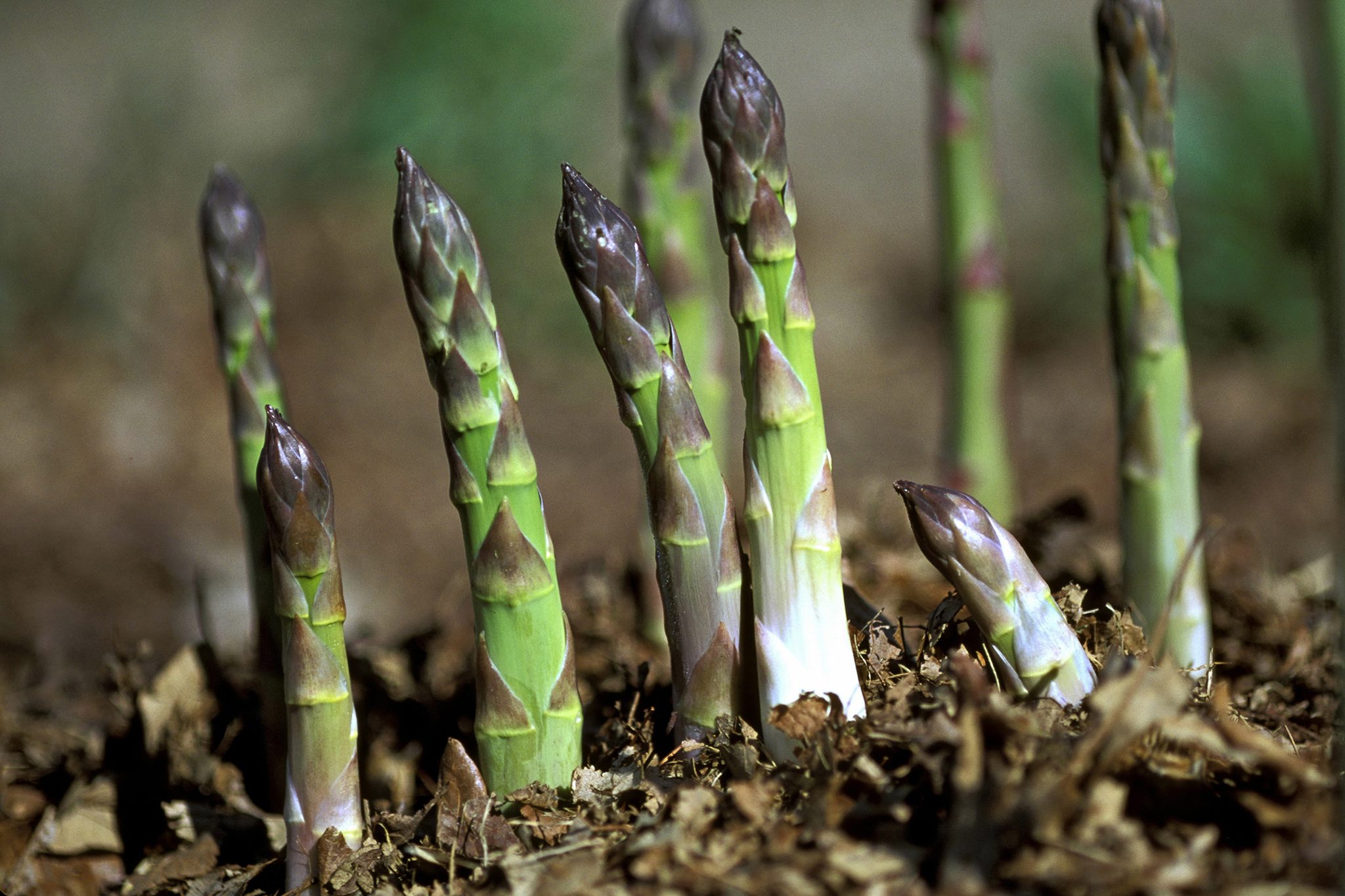Home>Types of Gardening>Edible Gardening>How Vegetables Grow
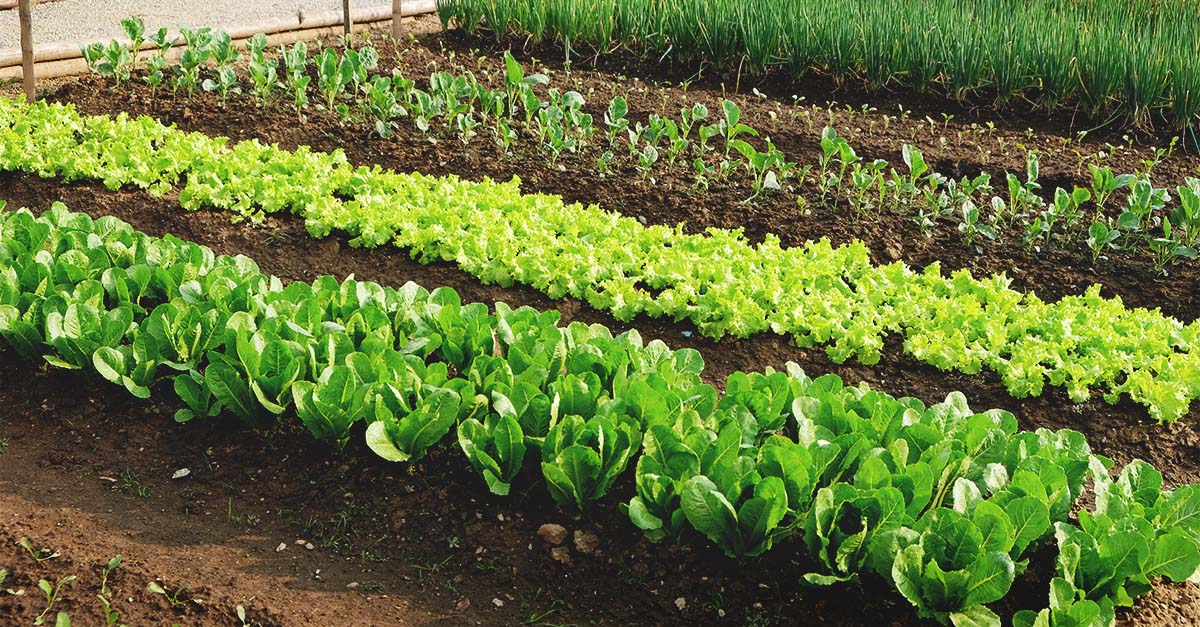

Edible Gardening
How Vegetables Grow
Modified: February 9, 2024
Learn the basics of edible gardening and discover how vegetables grow in your own backyard. Start your own vegetable garden and enjoy fresh and organic produce.
(Many of the links in this article redirect to a specific reviewed product. Your purchase of these products through affiliate links helps to generate commission for Chicagolandgardening.com, at no extra cost. Learn more)
Table of Contents
- Introduction
- Factors that Affect Vegetable Growth
- Soil Requirements for Vegetable Growth
- Sunlight and Temperature Needs
- Watering and Drainage
- Common Vegetables and Their Growth Habit
- Seed Germination and Planting Techniques
- Care and Maintenance of Vegetable Plants
- Protection from Pests and Diseases
- Harvesting and Storing Vegetables
- Conclusion
Introduction
Welcome to the world of edible gardening! Growing your own vegetables is not only a rewarding experience but also a great way to ensure a fresh and sustainable food source for you and your family. Whether you have a spacious backyard or just a small balcony, you can embark on the journey of cultivating nutritious and delicious vegetables right at home.
Edible gardening has gained popularity in recent years as people are becoming more conscious of the benefits of consuming homegrown produce. Not only does it provide a sense of self-sufficiency, but it also allows you to have control over what goes into your food. Plus, the taste of freshly harvested vegetables straight from your garden is simply unmatched!
In this article, we will explore the fascinating world of edible gardening, covering the essential factors that affect vegetable growth, the specific soil requirements for optimal plant development, as well as the sunlight, temperature, and watering needs for different vegetable varieties. We will also dive into the techniques of seed germination and planting, providing you with the knowledge and skills necessary to start your very own vegetable garden.
Additionally, we’ll discuss the various measures you can take to ensure the health and well-being of your vegetable plants, including pest and disease prevention methods. Finally, we’ll guide you through the process of harvesting your crops and storing them for future use.
Whether you are an experienced gardener looking to level up your skills or a beginner embarking on your first gardening project, this article will serve as a comprehensive guide to help you grow your own thriving vegetable garden. So, let’s get our hands dirty and explore the wonderful world of edible gardening together!
Factors that Affect Vegetable Growth
Several factors play a crucial role in the growth and development of vegetables. Understanding these factors will help you create an optimal environment for your plants and ensure their healthy and productive growth.
1. Climate: Different vegetables have varying climate preferences. Some thrive in warmer temperatures, while others prefer cooler climates. Understanding the ideal temperature range for each vegetable is essential for their successful growth. Additionally, factors such as frost, excessive heat, or prolonged periods of rain can negatively impact vegetable growth.
2. Soil Quality: The quality of the soil is paramount to the health of your vegetable plants. Soil should be rich in organic matter, well-draining, and have a balanced pH level. It should provide the necessary nutrients for the plants to grow. Conduct a soil test to determine its composition and make any necessary amendments to ensure optimal conditions for your vegetables.
3. Water: Adequate watering is vital for vegetable growth. Different vegetables have different water requirements, and it is important to provide consistent and appropriate moisture levels. Too much water can lead to root rot, while insufficient water can cause stress and stunted growth. Mulching can help retain moisture and protect the plants from extreme temperatures.
4. Sunlight: Most vegetables require full sun, which means they need a minimum of six hours of direct sunlight per day for optimal growth. Lack of sunlight can lead to leggy and weak plants. If you have limited sun exposure in your garden, consider growing shade-tolerant vegetables or utilizing shade cloth to protect delicate plants.
5. Nutrients: Vegetables need a balanced supply of essential nutrients to thrive. Nitrogen, phosphorus, and potassium are the primary macronutrients required in varying proportions. Supplementing the soil with organic matter or using organic fertilizers can provide the necessary nutrients for healthy plant growth. Avoid over-fertilizing, as it can lead to nutrient imbalances and adverse effects on the plants.
6. Companion planting: Some vegetables have beneficial relationships with other plants. Combining certain vegetables can help deter pests, enhance pollination, and improve overall plant health. For example, planting basil near tomatoes can help repel pests like aphids.
By considering these factors and making appropriate adjustments, you can create an environment that promotes optimal growth for your vegetables. Experimenting and learning from your gardening experiences will ultimately help you develop the best practices for your specific climate and vegetable preferences. With a bit of knowledge and a green thumb, your vegetable garden will thrive and provide an abundant harvest for you to enjoy!
Soil Requirements for Vegetable Growth
The quality of the soil is one of the key determinants of successful vegetable growth. Ensuring that your garden soil meets the necessary requirements will provide a solid foundation for healthy plants and productive yields.
1. Soil Composition: Good soil composition is crucial for vegetable growth. Ideally, your soil should have a balanced texture that allows for proper drainage while retaining adequate moisture. A mix of sand, silt, and clay in equal proportions creates loamy soil, which is considered ideal for most vegetables.
2. Organic Matter: Adding organic matter, such as compost or well-rotted manure, improves the soil’s structure and fertility. Organic matter enhances water retention and drainage, promotes beneficial microbial activity, and supplies essential nutrients to the plants. Regularly amend your soil with organic matter to maintain its fertility.
3. pH Level: The pH level of the soil affects nutrient availability to plants. Most vegetables thrive in slightly acidic to neutral soil, with a pH range of 6.0 to 7.0. Conduct a soil test to determine the pH level of your soil, and if necessary, adjust it using soil amendments like lime or sulfur to create an optimal growing environment for your vegetables.
4. Nutrient Content: Vegetables require a balanced supply of essential nutrients for healthy growth. Nitrogen (N), phosphorus (P), and potassium (K) are the primary macronutrients needed in varying amounts. Additional micronutrients like calcium, magnesium, and trace minerals are also crucial. Conducting a soil test can help identify any nutrient deficiencies so that you can apply fertilizers or organic amendments accordingly.
5. Soil Drainage: Proper soil drainage is essential to prevent waterlogging and root rot. Vegetables generally prefer well-draining soil, as excessive moisture can suffocate the roots. Amending heavy clay soils with organic matter or introducing drainage systems can improve soil structure and drainage capabilities.
6. Soil Sterility: Soilborne diseases and pests can severely impact vegetable growth. Crop rotation and soil sterilization techniques, such as solarization or steam treatment, can help minimize the risk of disease infestation. Avoid planting the same kind of vegetable in the same location year after year to prevent the build-up of pathogens in the soil.
By focusing on these soil requirements, you can provide your vegetables with an optimal growing environment. Regular soil testing, amending the soil with organic matter, and maintaining proper drainage will ensure that the soil remains fertile and conducive to healthy plant growth. Remember, healthy soil leads to healthy plants, which in turn yield bountiful and delicious vegetables for your enjoyment.
Sunlight and Temperature Needs
Sunlight and temperature are two crucial factors that significantly impact the growth and development of vegetables. Understanding the specific sunlight and temperature requirements for different varieties of vegetables will help you optimize their growth in your garden.
Sunlight: Most vegetables thrive in full sun, which means they require a minimum of six hours of direct sunlight per day. Sunlight is essential for photosynthesis, the process by which plants convert sunlight into energy to fuel their growth. Without sufficient sunlight, vegetables may become weak, spindly, and fail to produce abundant harvests.
However, some vegetables can tolerate partial shade or exhibit shade-tolerant characteristics. Examples include leafy greens like lettuce and spinach, along with cool-season crops like broccoli and cauliflower. If your garden has limited exposure to direct sunlight, consider planting these shade-tolerant vegetables or utilizing shade cloth to provide them with the necessary protection.
Temperature: Different vegetables have different temperature preferences for optimal growth. Some are cool-season varieties that thrive in lower temperatures, while others are warm-season crops that require higher temperatures to flourish. Understanding the temperature needs of your vegetables will help you plan your planting schedule accordingly.
Cool-season vegetables, such as lettuce, peas, and carrots, prefer temperatures in the range of 55°F to 70°F (13°C to 21°C). These vegetables can tolerate light frosts and grow well in early spring or fall when temperatures are cooler. On the other hand, warm-season vegetables, like tomatoes, peppers, and cucumbers, thrive in temperatures between 70°F and 90°F (21°C to 32°C). These vegetables require warmer weather and should be planted after the danger of frost has passed.
Extreme temperatures, whether excessively hot or cold, can stress and damage vegetable plants. Protecting your plants from extreme temperature conditions can be achieved by using protective coverings during frost events or providing shade during scorching summer days.
It’s important to note that microclimates within your garden can also affect sunlight and temperature conditions. Consider factors such as nearby buildings, trees, or bodies of water that may cast shadows or create variations in temperature. Observing these microclimate differences will help you make informed decisions about where to plant different vegetables in your garden.
By providing the appropriate amount of sunlight and maintaining suitable temperatures, you can ensure optimal growth and maximum yields from your vegetable garden. Pay attention to the specific requirements of each vegetable variety, and tailor your gardening practices accordingly to create an environment that promotes healthy and robust plant growth.
Watering and Drainage
Proper watering and drainage are crucial factors in maintaining healthy vegetable plants. Water is essential for all plant functions, including photosynthesis, nutrient absorption, and maintaining cell turgidity. Understanding the watering needs of your vegetables and ensuring proper drainage will help prevent water-related issues and promote optimal growth.
Watering:
Vegetables require consistent and adequate moisture to thrive. However, overwatering or underwatering can lead to problems such as root rot, nutrient leaching, and stunted growth. Here are some tips for watering your vegetable garden:
- Water deeply and infrequently: Instead of frequently applying small amounts of water, water deeply to encourage deeper root growth. This helps the plants become more resilient to drought and promotes stronger overall plant development.
- Early morning watering: Watering in the early morning allows the foliage to dry during the day, reducing the risk of fungal diseases. Avoid watering in the late evening or at night, as it can create a damp environment that promotes fungal growth.
- Direct the water to the root zone: Avoid wetting the leaves unnecessarily. Watering directly at the base of the plant allows the roots to absorb the moisture efficiently.
- Use mulch: Applying a layer of organic mulch around your plants helps retain moisture, suppresses weed growth, and moderates soil temperature. Mulching can reduce water evaporation and the need for frequent watering.
Drainage:
Proper drainage is equally important for vegetable growth. Most vegetables prefer well-draining soil that allows excess water to flow away from the root zone. Here’s how you can improve drainage in your garden:
- Test your soil drainage: Conduct a simple drainage test by digging a hole and filling it with water. If the water drains within a few hours, your soil drainage is adequate. If it takes longer or the water stagnates, you may need to amend your soil or consider raised bed gardening.
- Amend heavy clay soils: If you have heavy clay soils that drain poorly, incorporate organic matter such as compost, well-rotted manure, or peat moss into the soil. These amendments improve soil structure and enhance drainage capabilities.
- Elevate raised beds: Raised beds provide excellent drainage since they are built above ground level. Fill them with well-draining soil mixtures to ensure optimal growing conditions.
Remember to monitor the moisture levels in your garden regularly. Check the soil moisture by sticking your finger about an inch into the soil. If it feels dry at that depth, it’s time to water. However, if it feels moist, hold off on watering until the top inch of soil dries out.
By properly watering your vegetable garden and ensuring adequate drainage, you can provide the ideal moisture levels for your plants’ growth. Consistency and observation are key to maintaining a healthy balance, allowing your vegetables to flourish and yield abundant harvests.
Common Vegetables and Their Growth Habit
When planning your vegetable garden, it is essential to understand the growth habits of different vegetables. Each plant has unique characteristics and requirements that determine how it grows and interacts with its surroundings. Knowing these growth habits will help you optimize your garden layout and ensure the best conditions for each vegetable.
1. Leafy Greens: Leafy greens such as lettuce, spinach, and kale have a compact growth habit. These vegetables are commonly grown for their edible leaves and require regular harvesting to promote continuous growth. They can be easily grown in containers or small garden spaces.
2. Root Vegetables: Root vegetables include carrots, radishes, beets, and turnips. These vegetables develop their edible parts underground and require loose, well-drained soil. Be mindful of stone or compacted soil, as it can result in stunted or misshapen roots. Proper thinning is important to allow enough space for the roots to develop properly.
3. Fruit-bearing Vegetables: This category includes tomatoes, peppers, cucumbers, and eggplants. These vegetables produce fruit that is harvested for consumption. They typically have vine-like growth habits and require support structures such as trellises or stakes to ensure proper growth and prevent the fruit from touching the ground. Provide sufficient spacing to allow air circulation and prevent overcrowding.
4. Climbing Vegetables: Vegetables like beans, peas, and squash have a climbing growth habit. These plants produce long vines that need vertical support. Providing trellises or stakes allows them to climb and maximize space utilization. Regularly harvest the produce to encourage continuous growth and prevent the plant from becoming overly burdensome.
5. Brassicas: Brassicas include cabbage, broccoli, cauliflower, and Brussels sprouts. These vegetables have a compact, upright growth habit and require rich soil and consistent moisture. Adequate spacing is crucial to allow proper airflow and prevent disease development. Brassicas are cool-season vegetables and often do well in fall or spring planting.
6. Herbs: While not technically vegetables, herbs are often grown alongside vegetables for culinary purposes. Herbs like basil, parsley, mint, and thyme can be grown in containers or in designated herb gardens. They have various growth habits, including compact, spreading, or upright. Understanding the specific requirements of each herb will help ensure their successful growth.
When planning your garden layout, consider the growth habits of your chosen vegetables. Grouping plants with similar growth habits together can help optimize space utilization and provide easier maintenance. Additionally, rotating vegetable families each year helps prevent the build-up of diseases and pests.
By understanding the growth habits of common vegetables, you can create a well-organized and productive vegetable garden. Take into account the specific needs of each plant to provide optimal growing conditions and maximize your yield of fresh and delicious vegetables.
Seed Germination and Planting Techniques
Seed germination is the starting point of a successful vegetable garden. Understanding the process of seed germination and employing proper planting techniques will lay the foundation for healthy and vigorous plants. Here are some essential steps to get you started:
1. Seed Selection: Choose high-quality seeds from reputable sources. Consider factors such as the variety, disease resistance, and suitability for your climate. Read the seed packets or catalogs for specific instructions regarding planting depth and spacing.
2. Indoor or Outdoor Sowing: Some vegetables, such as tomatoes and peppers, benefit from starting indoors. Sow seeds in seed trays or small pots filled with a well-draining seed-starting mix. Keep the soil consistently moist and provide adequate warmth and light until the seedlings are ready to transplant outdoors. Others, like carrots or beans, can be directly sown into the garden.
3. Timing: Consider the appropriate planting time for each vegetable, as some are cool-season crops while others thrive in the warmth of summer. Consult local planting calendars or guides to determine the best time to sow seeds based on your specific climate and the average last frost date.
4. Soil Preparation: Prepare the soil by removing weeds, rocks, and debris. Loosen the soil gently with a garden fork or tiller and amend it with compost or organic matter to improve fertility and structure. Level the soil surface with a rake to create a smooth planting bed.
5. Planting Depth and Spacing: Follow the instructions on the seed packet or catalog for optimal planting depth and spacing. In general, most seeds should be planted at a depth of 2-3 times their diameter. Proper spacing ensures adequate airflow, access to sunlight, and prevents overcrowding, which can lead to disease development.
6. Watering: After sowing the seeds, water gently to ensure the soil is evenly moist. Avoid overwatering, as it can lead to seed displacement or fungal growth. Keep the soil consistently moist during the germination process, which typically takes 7-14 days, depending on the vegetable.
7. Thinning: Once the seedlings emerge and develop their first set of true leaves, thin them to provide sufficient space and resources for healthy growth. Remove the weaker or extra seedlings, leaving the strongest ones to grow. Thinning prevents overcrowding and competition for nutrients and sunlight.
8. Protection from Pests: Take measures to protect the young seedlings from pests like birds, insects, and small animals. Use physical barriers like nettings or row covers and consider organic pest control methods such as companion planting or applying natural repellents.
By following these seed germination and planting techniques, you can give your vegetable garden a strong start. Remember to monitor the moisture levels, provide adequate light and temperature conditions, and care for your seedlings as they grow. With patience and proper care, your seeds will sprout into healthy plants that will eventually reward you with a bountiful harvest.
Care and Maintenance of Vegetable Plants
Proper care and maintenance are essential for the health and productivity of vegetable plants. By providing the necessary care, attention, and regular maintenance, you can ensure that your plants thrive and produce a bountiful harvest. Here are some important aspects to consider:
1. Watering: Regular and consistent watering is vital for vegetable plants. Watering should be done at the base of the plants, avoiding wetting the foliage excessively. Check the moisture level of the soil regularly and water deeply when the top inch of soil feels dry. Providing an adequate and consistent water supply ensures proper growth and prevents issues like blossom end rot or wilting.
2. Mulching: Applying a layer of organic mulch around the base of your plants helps conserve moisture, suppress weeds, and regulate soil temperatures. Mulch also helps prevent soil erosion and can provide a natural barrier against pests. Apply a two to three-inch layer of mulch, avoiding direct contact with the plant stems to prevent rot.
3. Fertilization: Vegetable plants require a steady supply of essential nutrients for optimal growth. Regularly fertilize with organic or slow-release fertilizers to replenish soil nutrients. Follow the instructions on the fertilizer package and avoid over-fertilizing, as this can lead to nutrient imbalances and burn the plants. Regular application of compost or well-rotted manure can also provide beneficial organic matter and nutrients to the soil.
4. Weed Control: Weeds compete with vegetable plants for nutrients, water, and sunlight. Regularly remove weeds from your garden beds to prevent them from overtaking your plants. Use manual hand weeding or consider mulching to suppress weed growth. Be cautious when using herbicides, as they can harm your vegetable plants if not applied properly.
5. Pruning and Training: Some vegetables, such as tomatoes and cucumbers, benefit from pruning and training. Removing excessive foliage or side shoots helps improve air circulation, reduces the risk of diseases, and directs the plant’s energy towards fruit production. Use stakes, trellises, or cages to support vining or climbing plants, ensuring they grow upright and have room to spread.
6. Pest and Disease Management: Regularly monitor your plants for signs of pests or diseases. Identify common pests and diseases that afflict your specific vegetable plants and take proactive measures to prevent or control them. Employ practices such as companion planting, crop rotation, and using organic pest control methods (like neem oil or insecticidal soaps) to minimize the use of chemical pesticides.
7. Harvesting: Harvest vegetables at the peak of ripeness to enjoy the best flavor and nutritional content. Different vegetables have different signs of readiness for harvest, such as color changes or firmness. Harvesting regularly promotes continuous production and prevents plant resources from being directed towards mature seeds rather than new growth.
By following these care and maintenance practices, you will create an environment that encourages healthy and productive vegetable plants. Regular attention to watering, fertilization, weed control, and pest management will lead to a fruitful and satisfying vegetable garden.
Protection from Pests and Diseases
Pests and diseases can pose significant threats to the health and productivity of your vegetable garden. Implementing effective protection measures is crucial to maintaining the well-being of your plants. By being proactive and employing various strategies, you can minimize the impact of pests and diseases on your vegetable plants. Here are some essential methods of protection:
1. Identification: Regularly inspect your plants for signs of pests and diseases. Familiarize yourself with common pests and diseases that affect vegetable plants in your region. Early detection allows for quick intervention and prevents the escalation of problems.
2. Companion Planting: Utilize companion planting techniques to naturally deter pests and attract beneficial insects. For example, planting marigolds near tomatoes can repel nematodes, and growing herbs like basil and parsley can attract beneficial insects that prey on pests.
3. Crop Rotation: Rotate your vegetable crops to different areas of your garden each year. Crop rotation helps to disrupt pest and disease life cycles and reduces the likelihood of reinfestation. It also prevents the build-up of soil-borne pests and pathogens.
4. Physical Barriers: Protect your plants from pests by using physical barriers such as mesh netting, row covers, or fences. These barriers prevent insects, birds, and larger animals from accessing your crops and causing damage.
5. Organic Pest Control: Consider using organic pest control methods to minimize the use of chemical pesticides. Natural remedies like neem oil, insecticidal soaps, or homemade insect traps can be effective in managing common pests. Introduce beneficial insects, such as ladybugs or praying mantises, that feed on garden pests.
6. Proper Sanitation: Practice good garden hygiene to minimize the spread of diseases. Remove and dispose of infected plant debris promptly. Clean your gardening tools, pots, and containers regularly to prevent the transfer of pathogens from one location to another.
7. Disease-Resistant Varieties: Choose vegetable varieties that are known for their disease resistance. Disease-resistant varieties have been bred to withstand specific pests or diseases, reducing the likelihood of infection and minimizing the need for chemical interventions.
8. Integrated Pest Management (IPM): Implement an integrated pest management approach that combines multiple strategies to control pests and diseases. This holistic approach emphasizes prevention, monitoring, and intervention based on the specific needs of your vegetable garden.
Remember, maintaining a healthy and thriving garden involves maintaining a delicate balance between protecting your plants and minimizing harm to the environment. Regular monitoring, early intervention, and employing a combination of protective measures will help ensure the success of your vegetable garden and promote sustainable and eco-friendly gardening practices.
Harvesting and Storing Vegetables
Harvesting your vegetables at the right time is crucial in ensuring their flavor, texture, and nutritional value. Additionally, proper storage techniques help prolong the shelf life of harvested produce. Understanding the optimal timing and methods for harvesting and storing vegetables will allow you to enjoy the full benefits of your garden’s bounty. Here are some guidelines to follow:
1. Harvesting:
- Refer to the specific guidelines for each vegetable variety to determine the best time for harvesting. For example, tomatoes are typically harvested when they reach full color and are slightly firm to the touch.
- Use harvesting tools, such as scissors or pruners, to avoid damaging the plants.
- Gently handle the vegetables to prevent bruising or crushing.
- Harvest leafy greens by picking individual leaves or cutting entire plants just above the soil level. This encourages continuous growth.
- Root vegetables can be gently pulled from the soil, or you can use a garden fork to loosen the soil around them.
- Harvest vine crops, such as cucumbers or beans, when they reach the desired size. Regularly harvest to prevent oversized produce and to encourage continuous production.
2. Preparing for Storage:
- Inspect harvested vegetables and remove any damaged or diseased portions. Only store healthy produce to prevent spoilage.
- Clean the vegetables gently to remove soil and debris. Do not wash them excessively as moisture can promote decay.
- Ensure the vegetables are completely dry before storing, as excess moisture can lead to rot.
3. Storage Conditions:
- Some vegetables, such as tomatoes and peppers, are best stored at room temperature to maintain their flavor and quality. Keep them in a cool, dry place away from direct sunlight. Use a wire mesh or a slatted tray to allow air circulation.
- Leafy greens and delicate herbs, like lettuce or basil, benefit from refrigeration. Store them in perforated plastic bags or containers with a damp paper towel to maintain moisture.
- Root vegetables, such as carrots or potatoes, prefer cool and dark storage conditions. Place them in a cool basement or root cellar, ideally in slatted crates or breathable bags to allow airflow.
- Some vegetables, like onions and garlic, need a well-ventilated area with low humidity. Hang them in mesh bags or store them in a cool and dry location.
4. Regular Inspection:
Regularly inspect stored vegetables for any signs of spoilage or decay. Remove any items showing signs of deterioration to prevent the spread of spoilage to other produce.
5. Proper Rotation and Usage:
Regularly utilize your stored vegetables to prevent them from going to waste. Prioritize using the oldest produce first to minimize spoilage. Incorporate your homegrown vegetables into meals, share them with friends and family, or preserve them through methods like canning, freezing, or pickling.
By following these harvesting and storage practices, you can maximize the quality and longevity of your homegrown vegetables. Enjoy the satisfaction of harvesting the fruits of your labor and savor the flavors of fresh, nutritious produce throughout the year.
Conclusion
Embarking on the journey of edible gardening allows you to experience the joy and satisfaction of growing your own fresh and nutritious vegetables. By understanding the factors that affect vegetable growth, providing the right soil conditions, ensuring proper sunlight and temperature, and maintaining adequate watering and drainage, you create an optimal environment for your plants to thrive.
Through seed germination and planting techniques, you can start your vegetable garden successfully. By caring for and maintaining your vegetable plants, including watering, fertilizing, and protecting them from pests and diseases, you promote their health and productivity.
Harvesting your vegetables at the right time and utilizing proper storage techniques allow you to enjoy the fruits of your labor for an extended period. Whether you’re savoring the taste of a freshly picked tomato or enjoying the convenience of stocking your pantry with homegrown produce, the rewards of your hard work are undeniable.
As you continue your edible gardening journey, remember that learning and experimenting are essential. Each gardening season provides opportunities for growth and improvement. Don’t be afraid to try new varieties, techniques, or companion planting combinations. Adapt and adjust your gardening practices based on your local climate, soil conditions, and the specific needs of your vegetable crops.
Ultimately, edible gardening is a wonderful way to connect with nature, promote sustainability, and have a healthier relationship with the food we consume. Embrace the satisfaction of cultivating your own food source and consider sharing the abundance of your harvest with others.
So, get your hands in the soil, nurture those seeds, and watch your vegetable garden flourish. Enjoy the process of tending to your plants, as well as the rewards of fresh and delicious vegetables that are right at your fingertips. Happy gardening!
